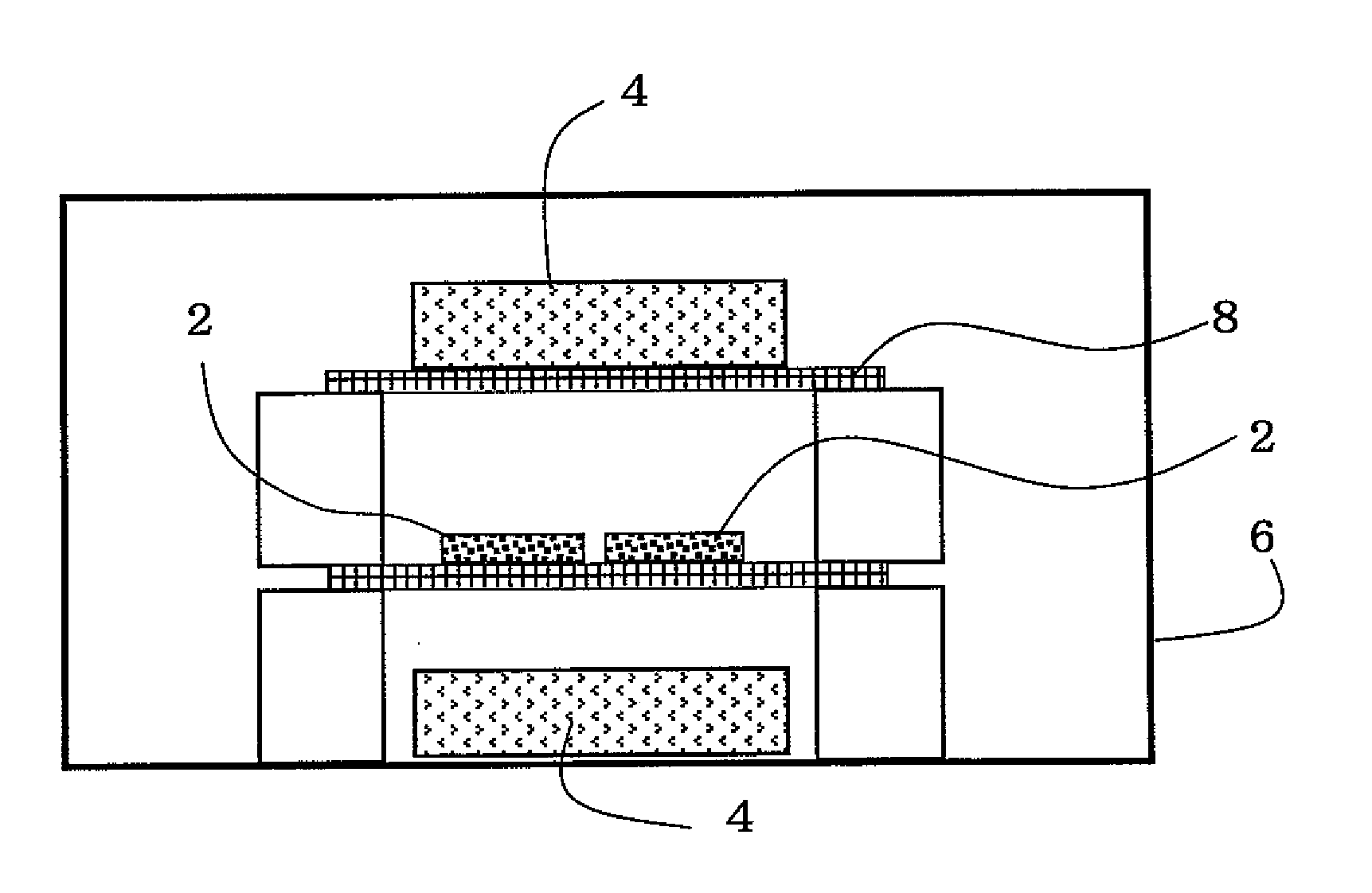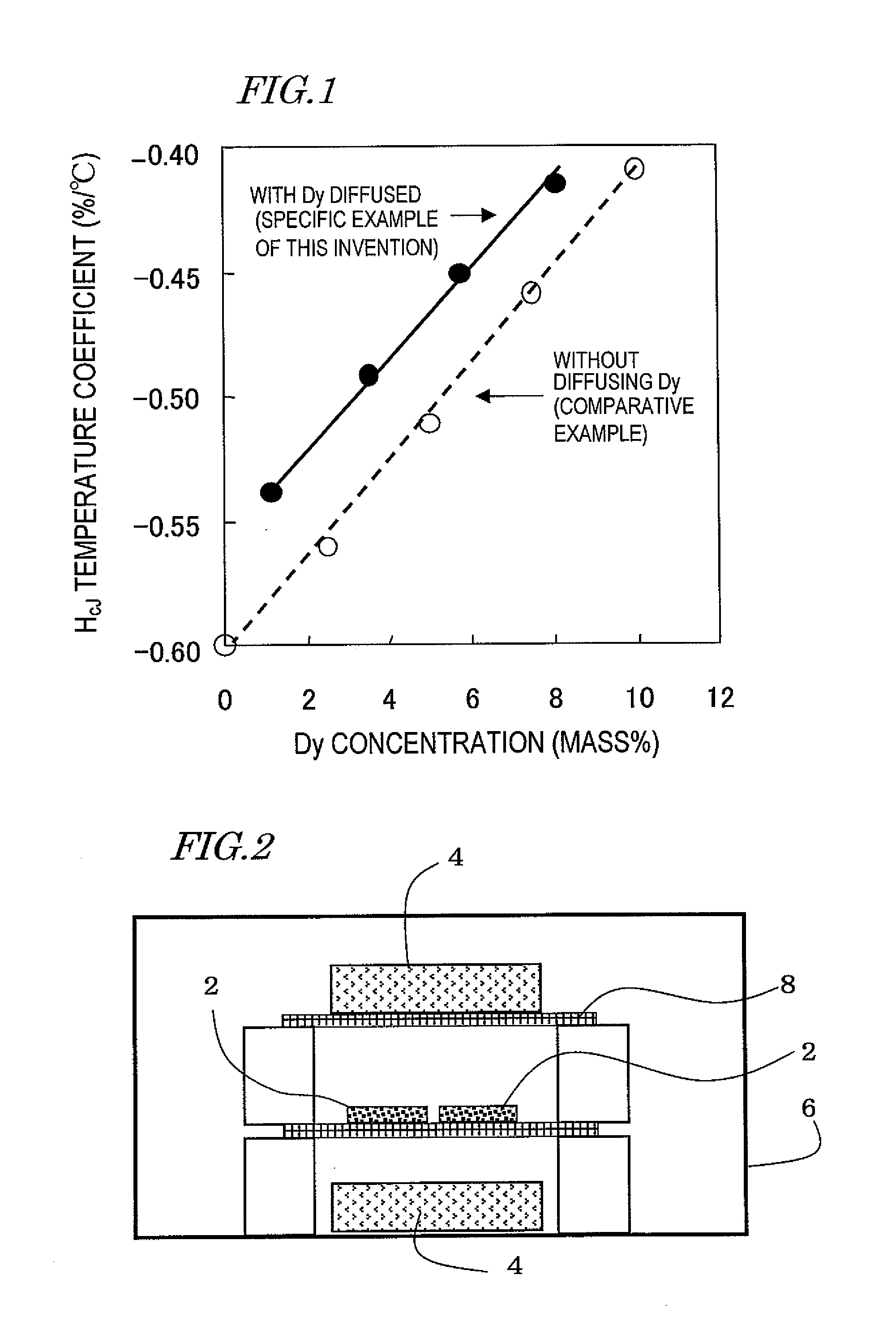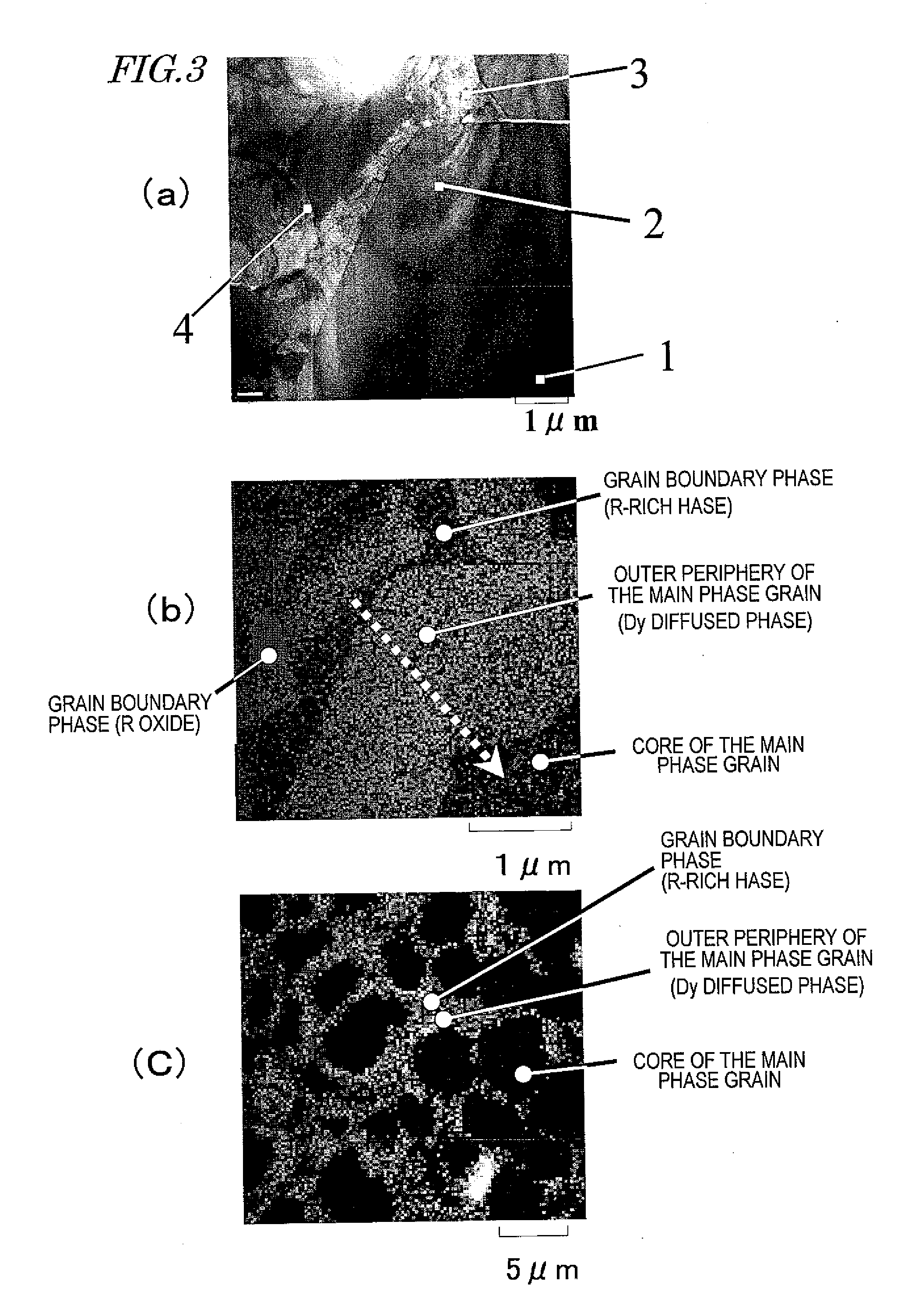R-Fe-B RARE EARTH SINTERED MAGNET
- Summary
- Abstract
- Description
- Claims
- Application Information
AI Technical Summary
Benefits of technology
Problems solved by technology
Method used
Image
Examples
Example
Example 1
First of all, alloys were prepared by strip casting process so as to have the compositions shown in the following Table 1 (in which the unit is mass %), thereby making thin alloy flakes with a thickness of 0.2 mm to 0.3 mm.
TABLE 1SampleNdDyBCoAlCuFe132.001.000.900.150.10Bal.229.52.5327.05.0424.57.5522.010.0631.50.51.000.900.150.10Bal.729.03.0826.55.5924.08.01021.510.5
Next, a container was loaded with those thin alloy flakes and then introduced into a hydrogen pulverizer, which was filled with a hydrogen gas atmosphere at a pressure of 500 kPa. In this manner, hydrogen was absorbed into the thin alloy flakes at room temperature and then desorbed. By performing such a hydrogen process, the thin alloy flakes were decrepitated to obtain a powder in indefinite shapes with sizes of about 0.15 mm to about 0.2 mm.
Thereafter, 0.05 wt % of zinc stearate was added as an aid for pulverization to the coarsely pulverized powder obtained by the hydrogen process and then the mixture was pu...
Example
Example 2
An alloy was prepared by strip casting process so as to have a composition consisting of 26.0 mass % of Nd, 6.0 mass % of Pr, 1.00 mass % of B, 0.9 mass % of Co, 0.1 mass % of Cu, 0.2 mass % of Al and Fe as the balance, thereby making thin alloy flakes with thicknesses of 0.2 mm to 0.3 mm.
Next, a container was loaded with those thin alloy flakes and then introduced into a hydrogen pulverizer, which was filled with a hydrogen gas atmosphere at a pressure of 500 kPa. In this manner, hydrogen was absorbed into the thin alloy flakes at room temperature and then desorbed. By performing such a hydrogen process, the thin alloy flakes were decrepitated to obtain a powder in indefinite shapes with sizes of about 0.15 mm to about 0.2 mm.
Thereafter, 0.05 wt % of zinc stearate was added as an aid for pulverizing the coarsely pulverized powder obtained by the hydrogen process and then the mixture was pulverized with a jet mill to obtain a fine powder with a size of approximately 3 μm.
Th...
Example
Example 3
First of all, alloys were prepared by strip casting process so as to have the compositions shown in the following Table 5 (in which the unit is mass %), thereby making thin alloy flakes with a thickness of 0.2 mm to 0.3 mm.
TABLE 5SampleNdDyTbBCoAlCuFe2130.0021.000.900.150.10Bal.2227.0052329.0302424.57.50
Next, a container was loaded with those thin alloy flakes and then introduced into a hydrogen pulverizer, which was filled with a hydrogen gas atmosphere at a pressure of 500 kPa. In this manner, hydrogen was absorbed into the thin alloy flakes at room temperature and then desorbed. By performing such a hydrogen process, the thin alloy flakes were decrepitated to obtain a powder in indefinite shapes with sizes of about 0.15 mm to about 0.2 mm.
Thereafter, 0.05 wt % of zinc stearate was added as an aid for pulverization to the coarsely pulverized powder obtained by the hydrogen process and then the mixture was pulverized with a jet mill to obtain a fine powder with a size of a...
PUM
 Login to View More
Login to View More Abstract
Description
Claims
Application Information
 Login to View More
Login to View More - R&D
- Intellectual Property
- Life Sciences
- Materials
- Tech Scout
- Unparalleled Data Quality
- Higher Quality Content
- 60% Fewer Hallucinations
Browse by: Latest US Patents, China's latest patents, Technical Efficacy Thesaurus, Application Domain, Technology Topic, Popular Technical Reports.
© 2025 PatSnap. All rights reserved.Legal|Privacy policy|Modern Slavery Act Transparency Statement|Sitemap|About US| Contact US: help@patsnap.com



